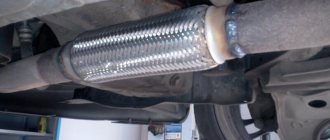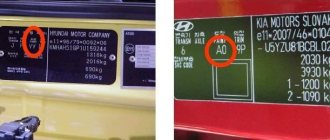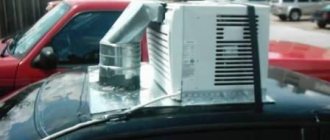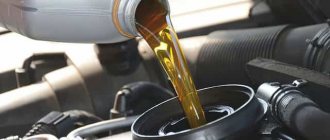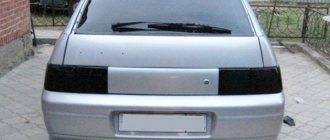Designs of flow heating of diesel fuel and their characteristics
The configuration of the power supply system up to the fuel injection pump is basically standard.
This is a fuel intake, a couple of filters and pipelines. Modern means make it possible to envelop each of these elements with artificial heat. The question is not so much about profitability as about price. Not everyone is ready to shell out 12,000 rubles just for the components. An alternative to unit heating is flow-through heating of diesel fuel, the function of which, in contrast to a home-made cabin fan heater, is to increase the temperature of diesel fuel. Structurally, the idea is embodied in a small double-circuit block. The diesel fuel circulates along the internal circuit, the structure of the external circuit is determined by the type of coolant.
Liquid
Hot antifreeze is a natural source of heat. The easiest way to use this energy is to locally heat a small section of a pipeline with your own hands. The heater consists of two pipes of different diameters, one of which is located in the center of the other. The external circuit is an integral part of the cooling system; fuel passes through the internal circuit.
The global implementation of such a system is hampered by a significant drawback - before starting the engine, the coolant is in a cold state. Essentially, the solution may be relevant in two cases:
- In harsh climatic conditions, as an alternative to tape heating of pipelines, so that diesel fuel does not lose fluidity during transportation.
- In midland regions, in the presence of pre-heating of the coolant.
Electrical
An electrical element with a high resistivity, through which a current of a certain strength is passed, is able to generate heat. This simple principle is taken as the basis for the manufacturing technology of electric heating. Progressive design:
- The direct function is executed immediately after the engine is started.
- There are prerequisites for automatic control of the operating temperature of diesel fuel.
Optimal layout
Flow heating of diesel fuel alone will not cope with dewaxing. Helpers needed. At the initial stage, a homemade fuel intake heater is sufficient. If you don’t want to make things yourself, ready-made factory products will help.
Bandage heating of the filter is essentially unnecessary. According to the diesel fuel movement diagram, it is located behind the flow-through heater, therefore, warm diesel fuel splashes in the housing of the filter element and there is no need for an extraneous thermal field.
Artificial heating of the fuel line in the “intake-flow heater” section will not hurt. The line is long, and the local thermal field in the tank is not capable of significantly increasing the temperature of the fuel at the inlet to the fuel intake. Particular benefit from this accessory is felt in regions with harsh climatic conditions.
Types of fuel filter heaters
There are several types of heaters based on their functional purpose:
- overhead bandage,
- flow-through,
- flexible tape,
- rod, works together with separator filters,
- nozzles for heating stationary fuel intakes,
- heated fuel intakes are used as an alternative to standard ones.
- Bandage patch
It has the shape of an overhead clip and is mounted on top of the filter housing. It heats the fuel before starting the engine. It is powered by the car battery.
- Flow-through
Used as an additional component in the fuel system. It is mounted in front of the fuel filter and heats it while the engine is running.
- Tape flexible
Necessary for external thermal insulation, as well as heating of parts of the fuel system. Heating is performed both before starting the engine and during its operation.
How to assemble a flow-through fuel heating and install it on a diesel engine with your own hands
We will focus our interest on the class of electric heaters. Liquid ones are often abandoned due to the inability to heat at the start and the lack of control over the temperature at the outlet of the device. Structures mounted on the output manifold have the same significant disadvantages.
Methods for implementing electric heating
Experience shows that it is difficult to make a mid-flight electric heater at home - you need a powerful heating element of a specific configuration and reliable thermal insulation. It is no less difficult to satisfy the special requirements for the compactness of the device; it is much easier to use proprietary solutions.
Donor car
Some French and Korean diesel engines are equipped with flow-through fuel heating from the factory. Taking their standard design as a basis is an excellent solution. Regardless of the car manufacturer, the device configuration is standard, since it was developed by the same company - Delphi. However, it is not possible to find a part for sale using the original article number 9305-117B. According to the component codes of individual machines, the unit is available for purchase:
- 31394-H1950 (Hyundai-Kia) – 1,700 rubles.
- 1579.Y6 (Peugeot-Citroen) – 1,800 rubles.
An important feature of the device is the ability to operate in automatic mode: when the fuel inlet temperature is above +2°C, the automatic system turns off the heater. Total power – 150 W. The diameter of the fittings is 10 mm.
For your information. The comfortable temperature of diesel fuel at the inlet to the injection pump is 37-40°C. Starting from 52°C, the wear of pump parts accelerates significantly - the lubricating properties of the diesel engine are important for it, which deteriorate when overheated.
Solutions from specialized companies
For the consumer basket, universal heaters are always available from companies specializing exclusively in the production of heating means for diesel engines:
- Manual EPT-150S (NPP Platan), 12/24 V – 1,600 rubles.
- Manual Sever-S MiniMax (CFH 007), 12/24 V – 2,900 rubles.
- Manual Nomacon PP-101 (12 V)/PP-102 (24 V) – 4,700 rubles.
- Automatic Nomacon PP-201 (12V)/PP-202 (24V) – 6,800 rubles.
At the starting price, only EPT-150S can compete with standard flow-through heating of cold diesel fuel. The Russian model preheats in 5-10 minutes and starts working, providing a temperature difference between the inlet and outlet within 15...20 °C.
Unlike Delphi, the device can be installed on trucks: there are three configurations of connection fittings to choose from: diameters 8/10/12 mm. Disadvantage: manual control. It is based on a high-resource ceramic heating element.
Another closest competitor to Delphi, but in terms of functionality is Nomacon PP-201/PP-202. The Belarusian development is attractive due to its automatic mode: at a fuel temperature of +5°C, the automatic switches off the heating element. Passenger fitting – 9 mm, cargo fitting – 12 mm. The obvious downside is the price.
Electric heating installation
The essence of installing an electric heater from any company is the same - integrate the device into the fuel line. There is no need to hastily cut the power supply system tubes; it is better to read the recommendations of manufacturers and mechanics:
- Install near the fine fuel filter.
- Avoid using conventional metal clamps.
- Install using quick release clamps.
The ideal solution is to remove the “quick release” from the filter element and install it at the inlet of the heater. Connect the heater output to the filter input using a section of fuel line with two quick-release clamps.
It is not difficult to connect a diesel fuel instantaneous heater with your own hands if you follow the main rules:
- Provide a four-pin VAZ relay and a 30A fuse in the power supply circuit of either an automatic or manual device.
- A button-switch will not interfere with the automatic machine.
- Wire cross-section – at least 4 mm2.
- The control plus should appear after the ignition is turned on.
Advice. Activate manual override at ambient temperatures below +5°C.
Features of installing Delphi electric heating
Special recommendations for installing heating systems from specialized companies are given in full by them: on the technical side - a pipeline with two “quick connectors”, on the electrical side - no comments. The technical component of the installation of parts from Hyundai-Kia or Peugeot-Citroen is identical. The only recommendation is to look for a 10 mm hose in car catalogs and mount the unit.
For your information. Previously, a section of fuel line from SSANGYONG Rexton under article number 2277508420 fit well, but now it is difficult to find it on sale, and the price is high. Alternatively, ask at a showdown.
Complex electrical aspects of the installation of equipment from Delphi are observed in terms of searching for a special block. Both a plastic housing and contact elements are required. A comprehensive solution from Hyundai-Kia under code 8999900026AS will cost 1,100 rubles. Expensive. An alternative is auto disassembly or purchasing new components one by one:
- Block 6541.S9 – 300 rubles.
- 2 terminals 6541.E6 – 100 rubles.
Advice. The place where the wire is attached to the contact element is additionally soldered.
Flow-through fuel heater
The heater is flow-through - it is built into the fuel line in front of the fine filter. Thus, heated fuel enters the filter and prevents its waxing. Used when the engine is running and/or as a heater while driving. There are two control options - automatic, which automatically turns on the heater at temperatures below +5, and manual, when the driver independently controls the flow-through heater from the passenger compartment. In any case, the driver will be notified about the working heater by an LED installed in the cabin.
Verdict
The idea of flow-through heating of diesel fuel is considered as an alternative to a homemade bandage heater for a fine fuel filter. There are three options available for consideration: an old-fashioned radiator for a collector, an ineffective liquid one, and a modern electric one. The recommendation is clear - electric heating and, preferably, with an automatic on/off function.
Among electric heaters, products from Delphi and Nomakon PP-201/PP-202 are subject to consideration. The pricing policy is such that devices from Hyundai-Kia or Peugeot-Citroen are monopolists, but only in the passenger car class: the difference in cost is about 4,000 rubles. Only the PP 202 model from Nomacon is suitable for trucks. The technology for inserting a heater contains nuances; there are also recommendations for the electrical part.
Types of diesel fuel heaters in a standard tank: modern and vintage designs
Relevance of the idea
It makes sense for residents and guests of the northern regions to equip a diesel fuel tank heating system with their own hands. At forty-degree frosts, even paraffins fall out of the winter diesel fuel and the insulation of the filter is powerless: the intake will not be able to take at least a small fraction of the required portion due to the diesel fuel reaching its pour point.
An ordinary headlight bulb was previously regarded as the only way out of this situation. A sufficiently powerful thermal field from the lamp is able to melt the precipitated paraffins and ensure a flow of fuel into the coarse filter element, and there the fuel filter heater does its job. In a truck driver’s glove compartment, even now you can find a simple electrical circuit consisting of a light bulb, a fuse and a toggle switch - just in case.
Modern designs
A current way to protect the fuel system from sudden loss of performance in severe frost is a heated nozzle on the fuel intake. Those who are fond of solving problems using proprietary tools will benefit from developments from Nomakon:
- NTP 101/301 – for passenger cars (4,500/10,000 rubles).
- NTP 102/302 – for trucks (4,500/10,000 rubles).
Intakes with a tube diameter of 10/12 mm can be equipped with a primitive 101 or 102 model. 301 and 302 products are universal + trained to dynamically change heating power. The choice is made based on the maximum consumption of diesel fuel through the heater, the voltage of the on-board network and the design features of the intake element.
The design diagram is extremely simple. The heating element is built into a metal case and is controlled from the on-board network via a cabin button. When current is applied, the heater creates a local thermal field and warms up the diesel fuel around itself. The manufacturer already recommends equipping vehicles with such a system when operating at an average ambient temperature of -15°C.
We heat the fuel from the engine cooling system
A composition heated in a tank or separator can easily lose fluidity when passing along the entire highway, and even at high vehicle speeds. In this case, the car enthusiast can choose and make with his own hands any layout of the diesel fuel heater using simple technologies:
- basic insulation of the fuel line with building materials;
- installation of an electric flexible heater by winding or applying it to the surface of the unit;
- installation of a heat exchanger in front of the fine filter element.
The last method is to make a part that has two independent contours. The simplest example of such a device consists of two tubes of different diameters. The thinner tube is welded and centered inside the larger one. The outer circuit consists of pipes for passing diesel fuel. The small circle of the cooling system is connected to the indoor unit. Variations of this design are possible, where the circuits intended for diesel fuel and hot antifreeze can be swapped. More complex specimens contain an internal block made of a spiral type. High reliability of diesel starting in winter conditions can be ensured only with comprehensive modernization. Its essence lies in the use of several of the methods described above, which heat the components of the fuel system.
On frosty winter days, owners of diesel vehicles may encounter operational problems. Remains of summer fuel or a sharp drop in ambient temperature can become a serious problem.
In this case, the car may easily not start due to the solidification of the energy carrier. Even worse is if the fuel line freezes while driving. Then the car may stall while driving. The closer you live to the north, the better you need to take care of heating the car tank. It's better to be prepared for trouble than to suddenly get stuck on a deserted highway.
Ways to prevent diesel fuel from solidifying in the tank
The summer grade of fuel or its inadequate quality are the prerequisites for future problems. There are three types of energy carrier: summer (operation down to -5°C), winter (up to -30°C) and arctic (pour point is -50°C). Before the cold season, it is recommended to replace the combustible material with a winter or arctic type.
If a mixture of two types occurs, and cold weather is coming, there are two solutions: using anti-gel additives or diluting the mixture with kerosene (or gasoline). But these are extreme measures. Their use is short-term.
The best way is to install a heating system for the fuel system. Naturally, if there is no standard heating of diesel fuel in the tank.
Reasons for installing a winter diesel fuel heater yourself: why and why?
- Paraffin 10-40%.
- Naphthenic 20-60%.
- Aromatic 15-30%.
Anyone who has decided to make a diesel fuel instantaneous heater with their own hands knows that summer grades of heavy fuel begin to lose their quality already at a temperature of about -5°C, and winter grades - at 25°C. Experienced motorists are well aware of the insurmountable difficulties in determining the differences between them without laboratory tests.
Winter metamorphoses
What processes occur with diesel fuel in winter conditions? As temperature values decrease, the viscosity of diesel fuel increases. Experts identify three thresholds for the transformation of emulsion fluidity:
- Turbidity is the beginning of crystallization of paraffins present in diesel fuel. For summer varieties the cloud point is -5°C, and for winter varieties - about -25°C.
- Extreme filterability - in this state, small paraffin crystals can clog the pores of filter meshes and elements, as well as settle in the fuel line channels and paralyze the operation of the internal combustion engine. If you do not install a diesel fuel heater yourself , then summer fuel enters this stage at -7°C, and winter fuel at -35°C.
- Solidification is the absolute loss of fluidity. At this stage, summer diesel fuel turns into jelly at -10°C, and winter diesel fuel turns into jelly at -40°C.
The main difference between diesel fuel brands is the percentage of paraffins that affect the fluidity of the emulsion, which means its use depending on weather conditions and temperature conditions. The most unpleasant period for owners of cars with a diesel engine is the autumn-winter off-season. At this time, the atmospheric temperature fluctuates between +3°C and -5°C and diesel fuel can thicken at any moment. And when there is also water in the diesel fuel, then energy collapse for the car is guaranteed.
Methods for ensuring the start and operation of a diesel engine at low temperatures
There are not so many ways to start the engine in cold weather and not all of them can be used effectively. Let's say starting a diesel engine using a tug is a rather risky undertaking. The timing drive of passenger cars is belt-type and, due to jerks during towing, it can easily jump over several teeth or even break completely. There is another modern method - the use of special additives in fuel, so-called depressants. However, you should take into account such points as the increasing cost of refilling and the dubious quality of some products in this series.
But, according to the reasoning of practitioners, a do-it-yourself flow-through heater of standard diesel fuel has the right to use due to low material costs and efficiency. Electrical and combined systems in the fight against crystallization of paraffin compounds have proven their productivity in all weather conditions. Such heaters are installed on critical components of the fuel system and quickly ensure the working condition of diesel fuel.





